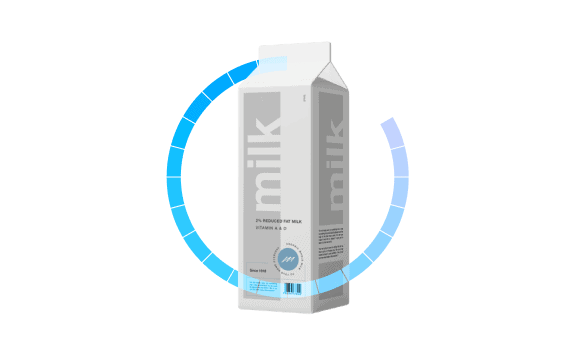Balancing Act: Value vs. Premium
Following economic challenges, the United States has shown greater resilience compared to its European counterpart.[1] A noteworthy trend has emerged throughout the year, with a portion of consumers showing a willingness to invest in premium, healthier food products and enhance their home experiences.[2] Looking ahead, companies in the Food & Beverage (F&B) sector are preparing to navigate shifting consumer preferences, notably with the rise of Generation Z as a significant demographic.[3]
Conversely, a considerable number of consumers prioritize value, leading to the continued growing popularity of private label brands within the industry. As pricing pressures persist, middle-market companies must explore innovative strategies to remain competitive while safeguarding profit margins. These strategies encompass the integration of artificial intelligence (AI) and data-driven solutions, aimed at optimizing supply, chains accurately forecasting demand, swiftly identifying emerging trends, and personalizing customer engagement through tailored advertising and pricing strategies.[4]
Innovation and Adaptation: Key to Market Growth
A closer look at the F&B industry’s health through share prices reveals a compelling story of investor confidence. This underscores the sector’s strategic resilience and adaptability. In Q3 of 2023, public companies in the Food & Beverage industry overall demonstrated strong financial performance, surpassing market expectations. Key industry players such as Coca-Cola and PepsiCo played pivotal roles in bolstering this success, leveraging strategic pricing actions to achieve strong financial results.[5]
Companies like Kraft Heinz exemplify the power of innovation and adaptation, reporting improved shelf space utilization and supply chain enhancements that have driven market share and volume growth.[6] Many industry participants are actively embracing strategic initiatives, including the concept of “shrinkflation,” in response to evolving consumer patterns and the competitive pricing landscape.[7]
M&A Trends: Evolution and Growth
Shifting focus to M&A activity, Q3 of 2023 witnessed a total of 130 M&A transactions announced or completed in the United States, marking a notable ~3.0% increase compared to the previous year. These M&A deals, accompanied by disclosed multiples, transacted at an average EV/EBITDA multiple of 13.8x during Q3 2023, reflecting a significant 36.6% increase from the previous quarter. The total transaction volume reached an impressive $9.4 billion, partly driven by substantial public-to-private deals.
While M&A activity in Q3 of 2023 experienced a slight dip compared to the previous quarter, a year-over-year analysis reveals a robust +3% increase compared to Q3 2022. Valuations, coupled with aggregate transaction values, rose during this period, fueled by increased sector profitability, controlled raw material costs, and the release of pent-up demand. Sellers, who had exercised caution in the past, are now actively participating in the market, further enlivening the M&A landscape.
Profitability Takes Center Stage
High interest rates for Private Equity (PE) buyers have notably reduced their participation, resulting in a 17% drop in all reported transactions—a figure not seen since 2019. This has put PE firms at a disadvantage, while strategic buyers capitalize on acquisitions aimed at achieving economies of scale, enhancing product offerings, and expanding market share, armed with substantial cash reserves. Anticipating a shift, interest rates are expected to decrease later in 2024, potentially leading to a resurgence in PE activity as many firms approach the end of their holding cycles.[8]
A noteworthy trend emerging is the preference of PE firms for companies with established profitability over those with mere growth potential, all with the aim of maximizing returns. Additionally, attention is drawn to the deployment of PE firms’ dry powder — an unprecedented $2.59 trillion in 2023, attributed to the accumulation of capital raised in previous years, yet to be deployed.[9]
Let’s Get In Touch
To explore the latest developments in the sector’s M&A landscape, share updates about your business, or discover our comprehensive advisory services and in-depth expertise in the F&B industry, give us a call.



